A week ago, I ran the Jungfrau Marathon. The race has stunning views, and while I can only speak for myself, it is also quite, though. And it takes a super long time, in my case more than 6 hours1. I was using my Apple Watch to track my run, and it’s fair to say I was super disappointed by the battery life of the device.
Short personal history of running watches
I have been using various types of running watch over the time. I started off with a Pebble smartwatch and used them including the Pebble 2 which I still received from the kickstarter backing2.
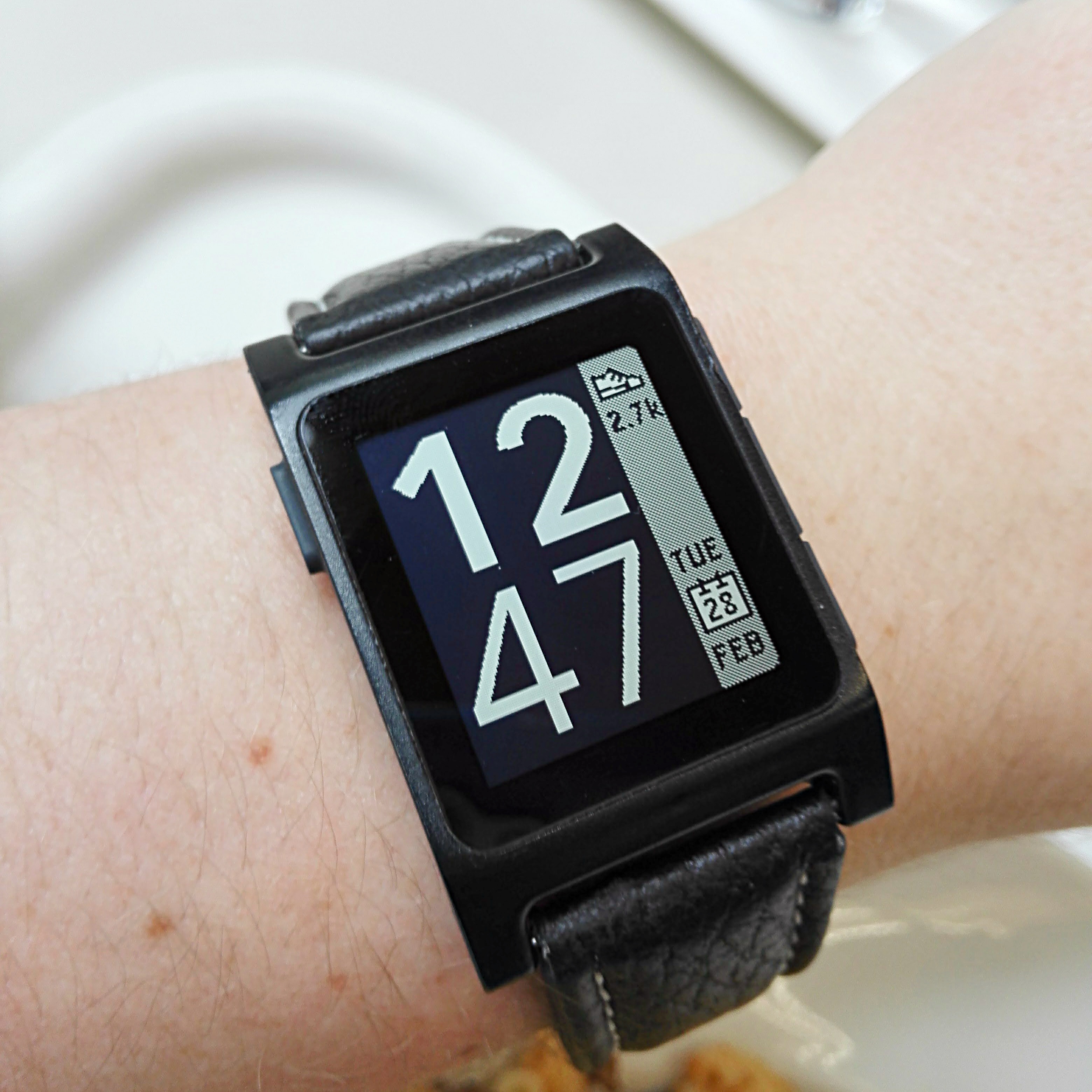
Pebble 2 on my arm, a long time ago
Now for running, Pebble was never that accurate as it didn’t have any GPS built in. So when running it was estimating the distance from the movement and, at least for me, it always overshot a bit with the distance. So when I got a bit older, and I was starting to run a bit more seriously3, I received a Garmin Vivoactive 3. It was a quite wonderful GPS watch with numerous useful smart features as well.
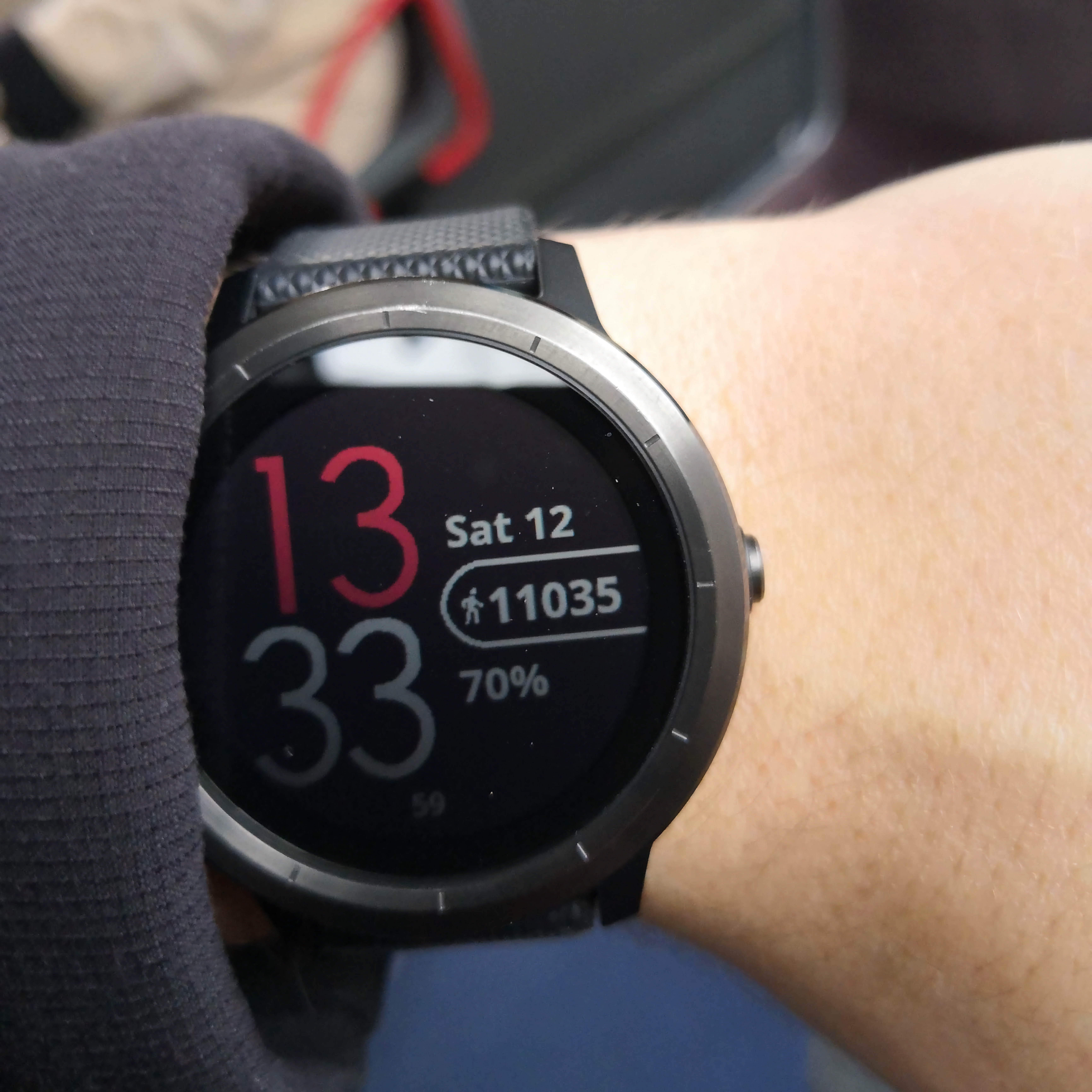
Racking up some early steps on my Vivoactive 3
I used that watch for quite a while, and it was good, but not great. Garmin announced shortly after I received my watch another model with Music support that always seemed very cool to me. And the touchscreen certainly had some problems. On the one hand, it was absolutely useless if it was running and would often add some “extra” laps to my workout, by simply being touch with my wet jacket twice. It was also lacking some more advances features as I have gotten more serious into running. And when Garmin announced the Forerunner 945 I bought one, as soon as it was somehow available somewhere in Switzerland.
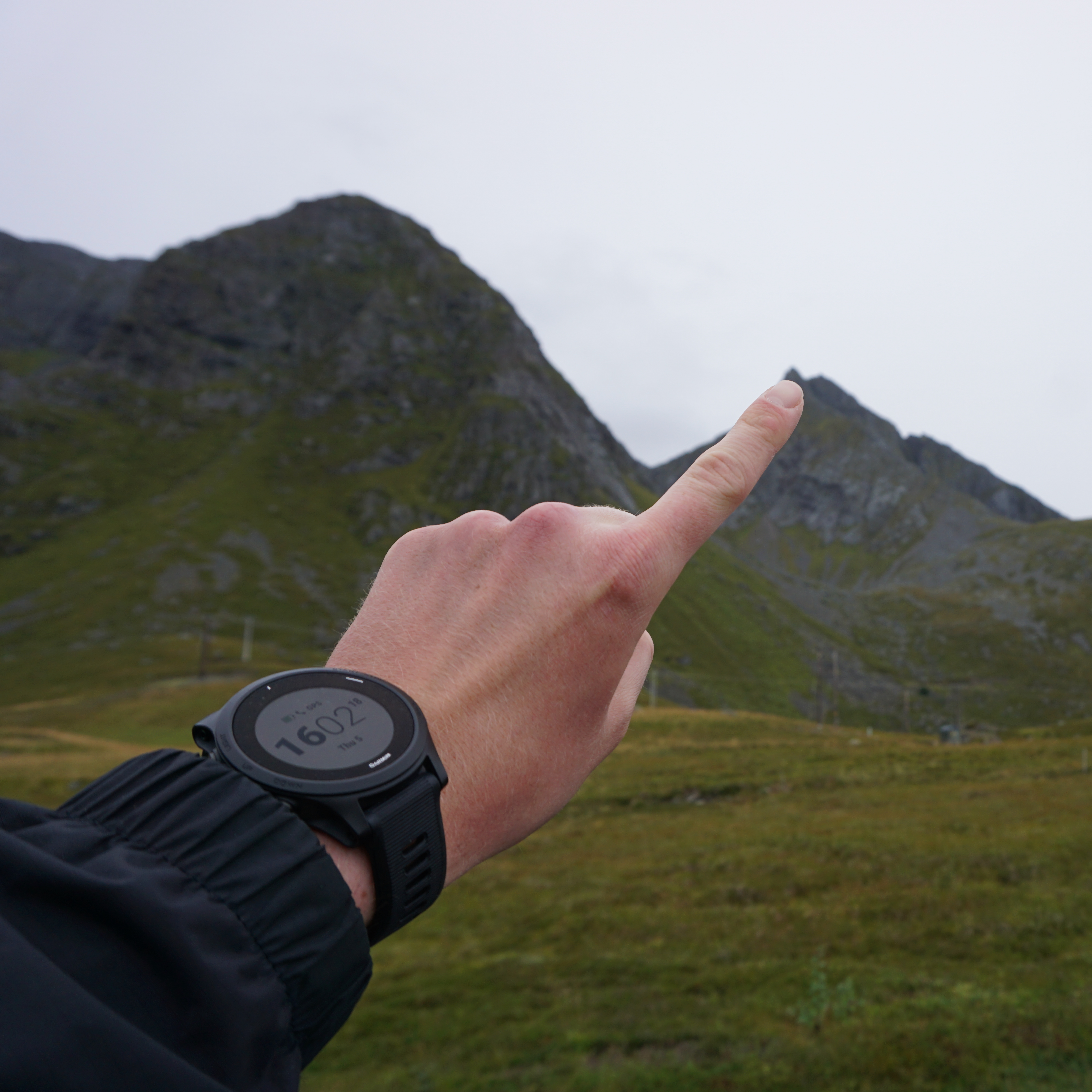
Pointing at some Norwegian hills with the Forerunner 945 navigating the stunning landscapes there
I was using the Forerunner 945 to its fullest. I was using it for navigating with the built-in maps, used the Garmin Pay functionality and was recording all kinds of workouts using the built-in workout features. Furthermore, I was using it for working out, but also as a bare-bones smartwatch.
The Forerunner 945 had some great functionality. The turn-by-turn navigation was great when exploring places around the world and trying new routes. The maps helped me to navigate to some places if I didn’t know, and the watch was always showing a preview of the notifications on my phone. The battery lasted a long time, generally I was only charging it once a week. The only thing I didn’t really use was the body battery and similar features, as they just didn’t help me that much and would probably require me to wear the watch to sleep. Something I refuse to do until this day[watch during sleep]. Of course, there were some downsides as well: The smart part of the smartwatch was not super useful, the integration with iPhone often lacking a bit. And the lack of touchscreen made it a bit harder as well. For example, typing in my code for Garmin Pay was always a bit cumbersome with just the up and down arrows. And music was also a bit of a challenge. While it could sync Spotify to the devices, it always lacked support for podcasts. And of course, to have connectivity you’d need to have your phone with you, the watch alone was unable to communicate with anything.
Introducing Apple Watch Ultra
With the introduction of the Apple Watch Ultra, Apple finally seemed to have a device that would be more on the sporty side, while also keeping all the great things about their smartwatches. Everyone was impressed by the battery duration of the device, claiming about 60 hours on low-power settings.
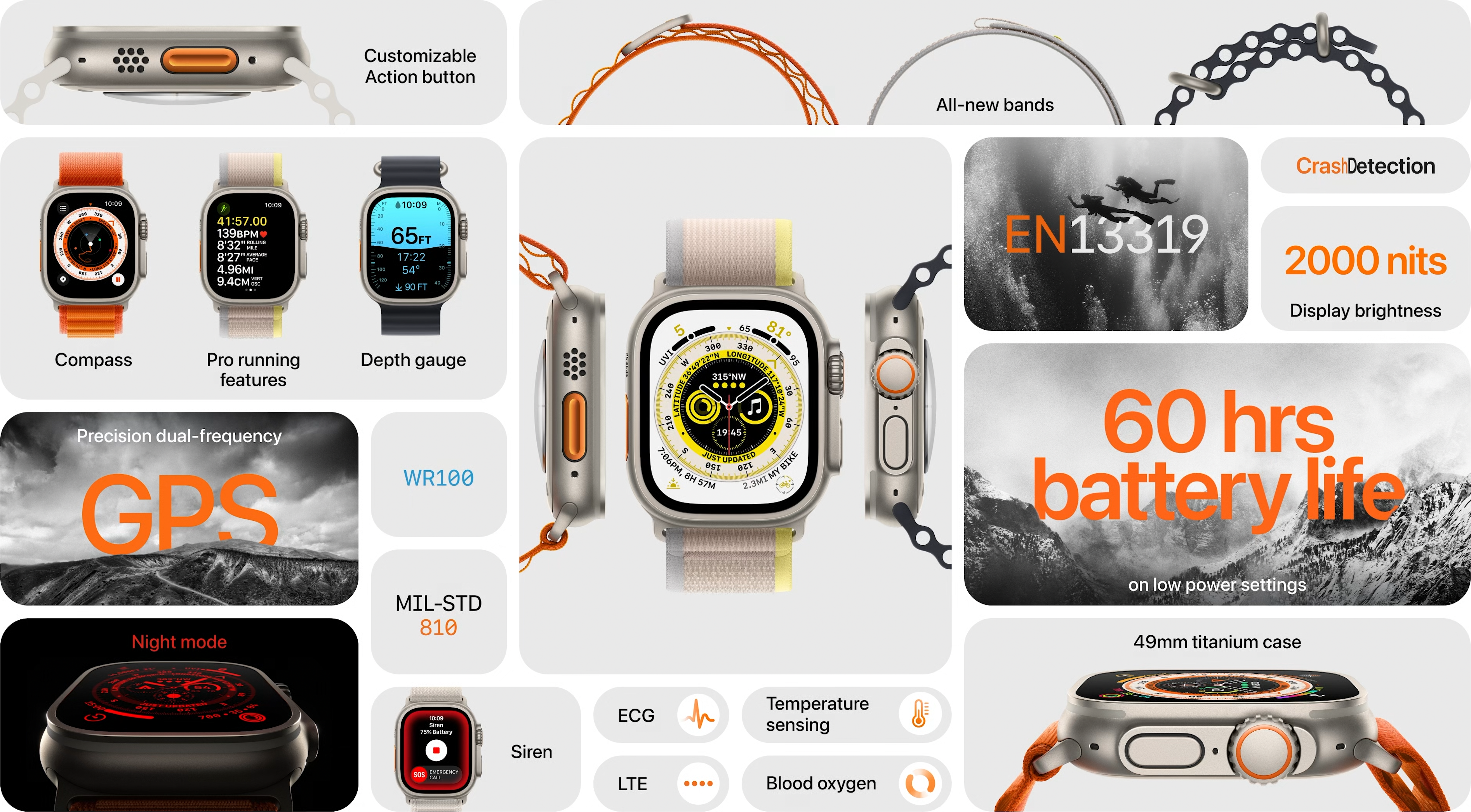
Bento information boxes for the Apple Watch Ultra, highlighting the 60 hours of battery life on low-power settings. Source: Screenshot from Apple Events
Now I knew I didn’t need 60 hours, but I was curious nevertheless. An Apple Watch that would last longer than a day, one that had precise GPS and cellular connectivity. It was looking tempting, and so I went ahead and bought one.
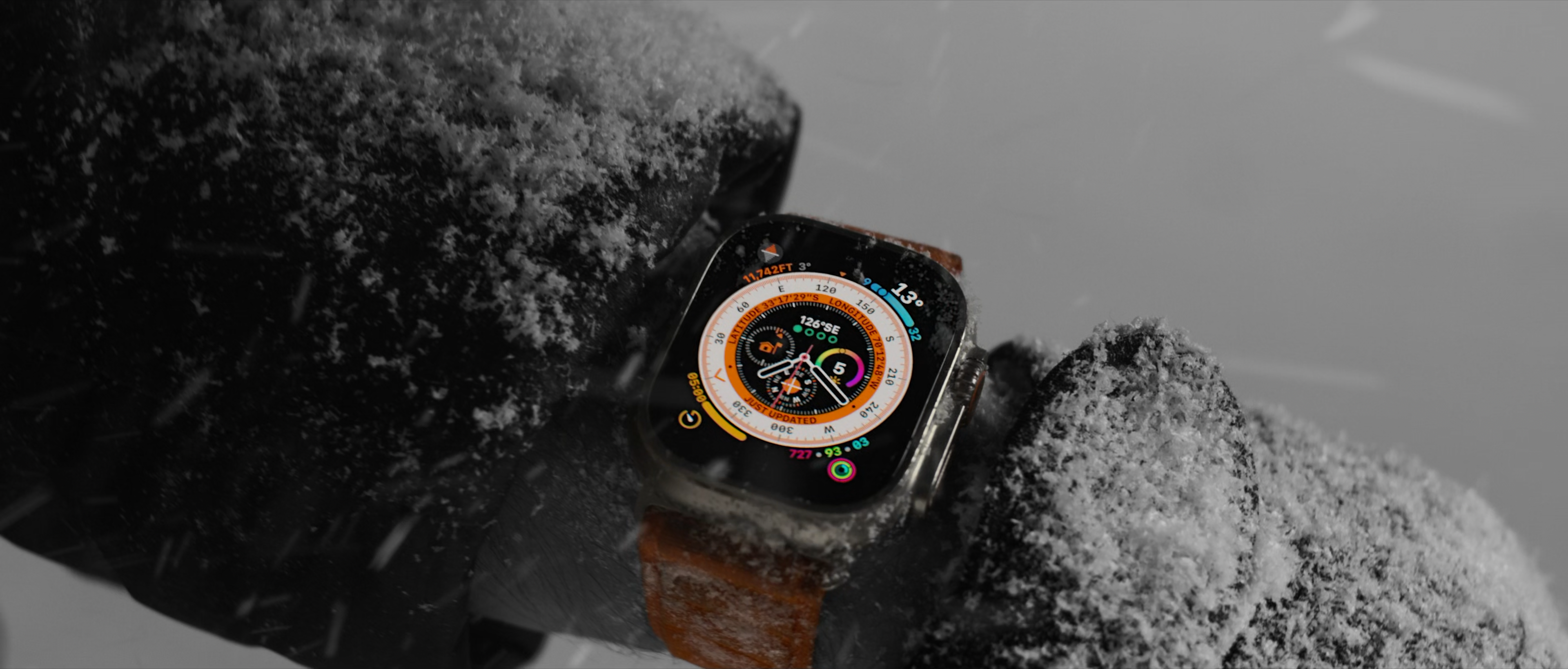
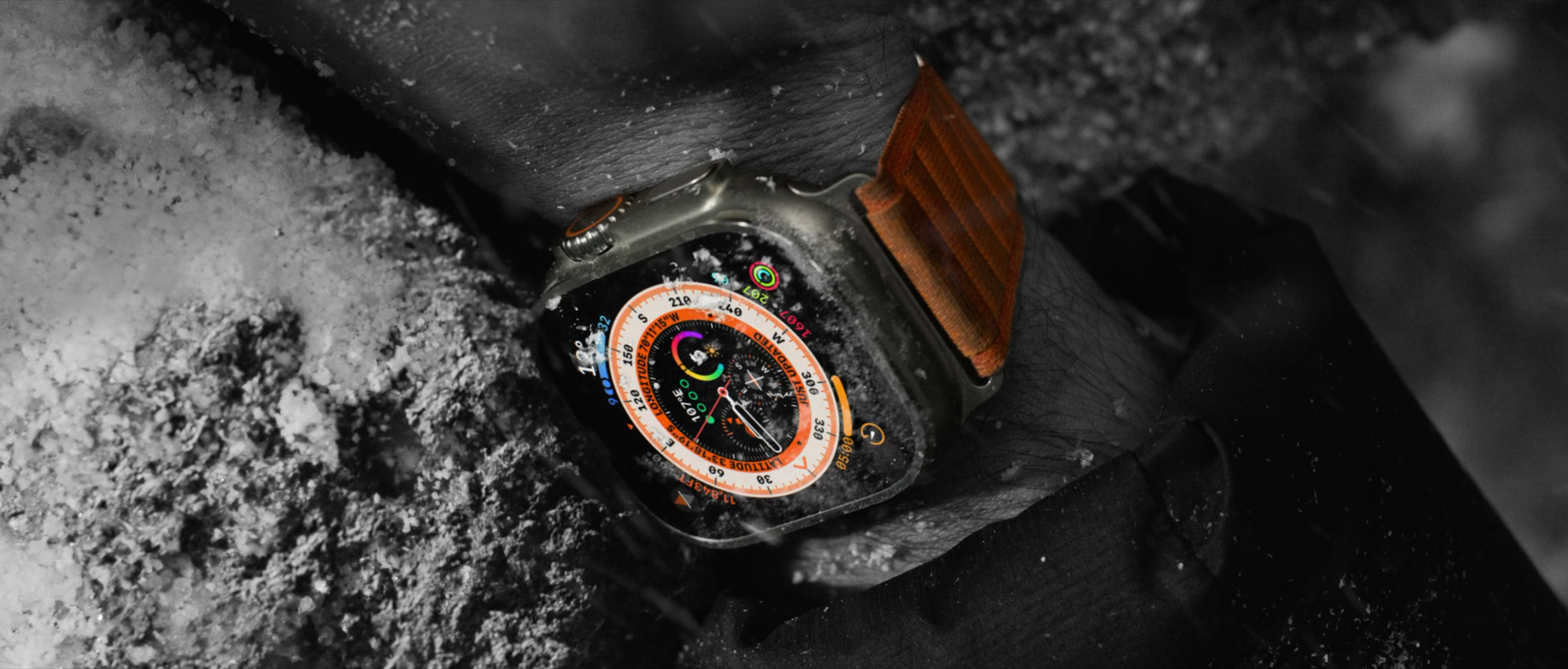
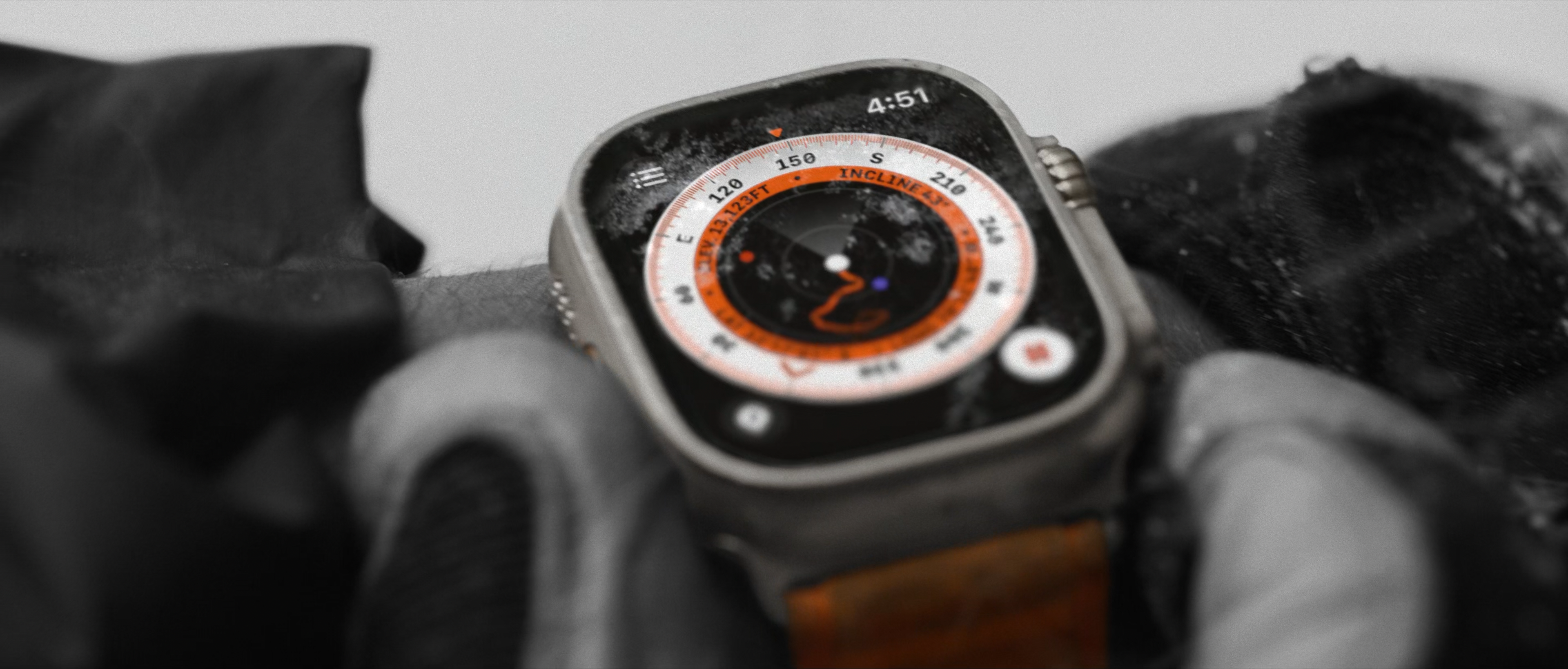
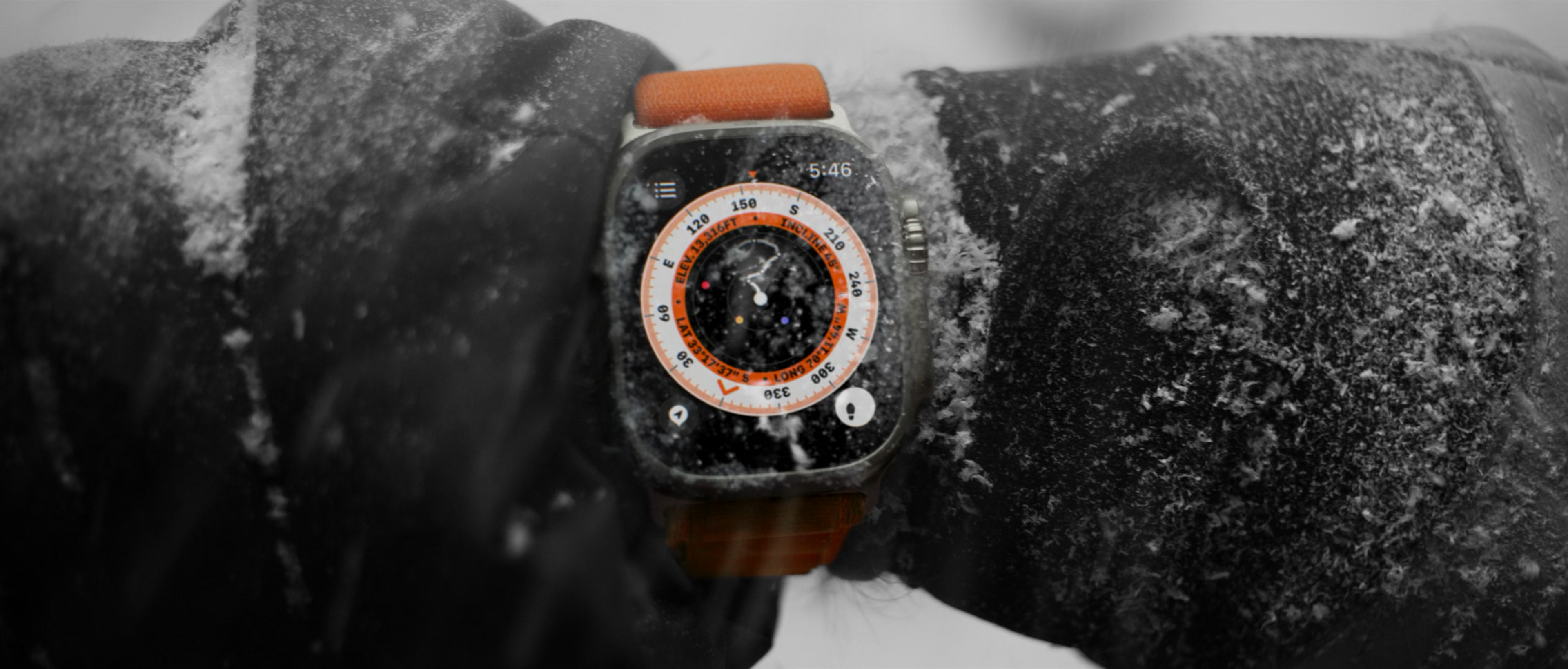
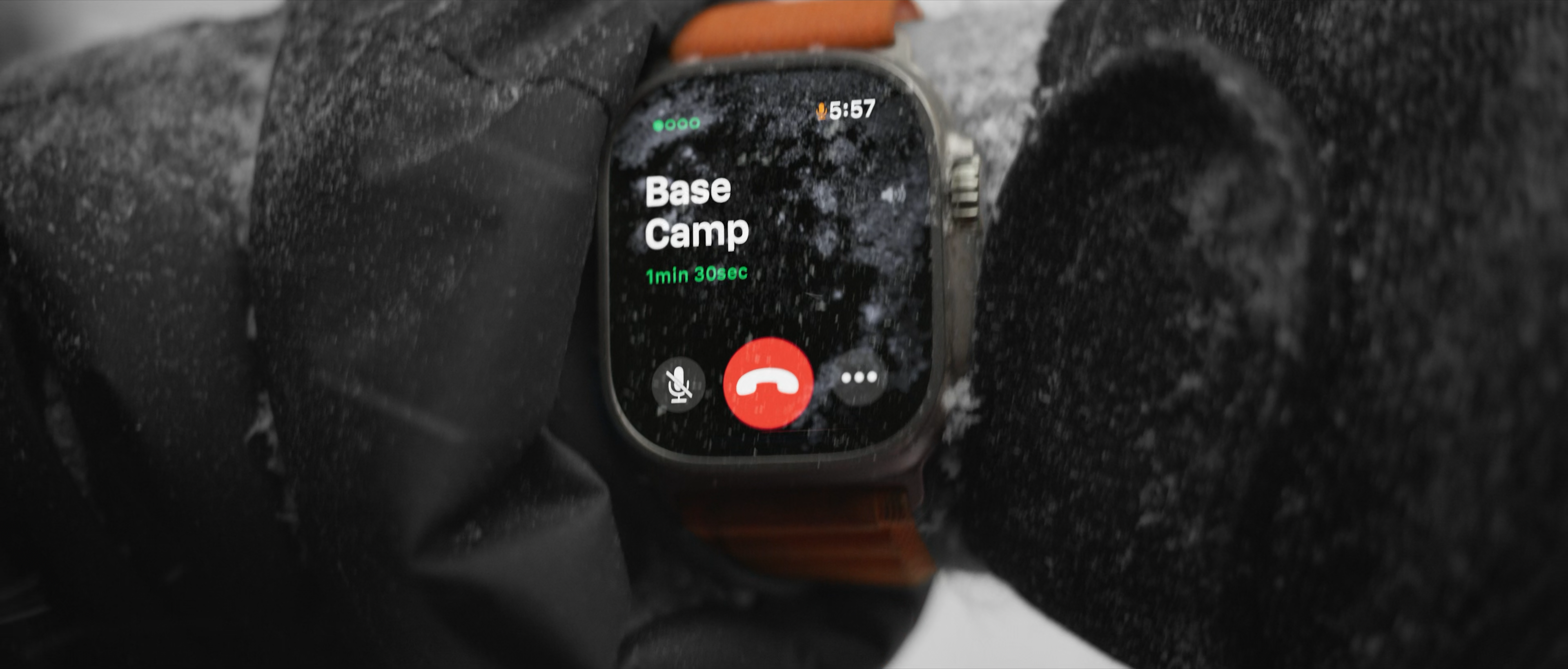
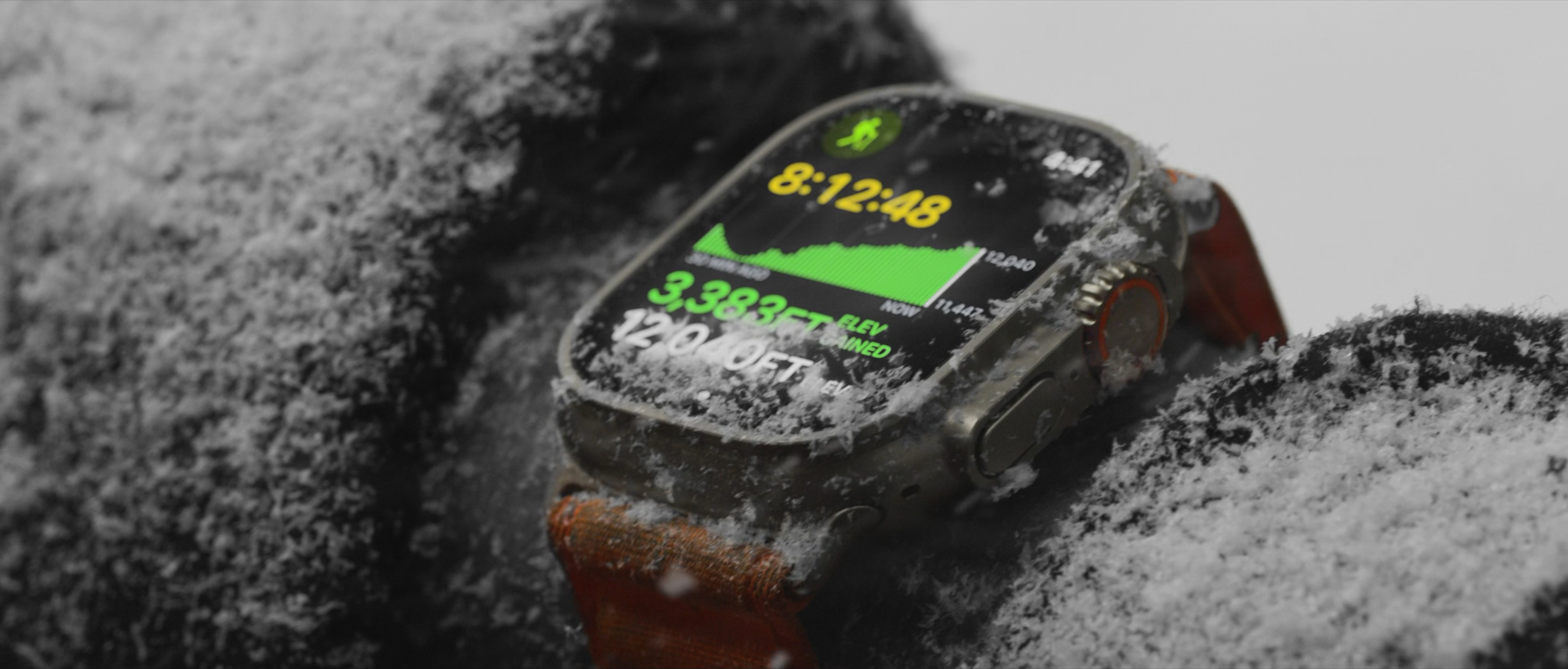
Some impressions in Apple’s marketing clips showing the Apple Watch Ultra being used for extreme sports. This might have been part of the reason the device seemed so tempting to me. Source: Screenshot from Apple Events
Let’s be abundantly clear: the Apple Watch is a remarkable smartwatch, and the integration with all of Apple’s other devices is excellent bar none. So far, I haven’t seen that good of an integration for any other device. But pretty soon after I received the devices, there were also some disappointments. Foremost, it is completely lacking any form of useful map integration. It is simply not possible to navigate after a given route without using a third-party app. While some of those apps are really great, they are not native level integration, and they use a lot of battery.
What was really wonderful, is that there is a Pocketcasts app that works amazingly, so I can listen to podcasts while working out. And while the synchronisation of the watch is not always that great, it does mostly work, and I can also listen to the next episodes offline. I found that it does, however, drain quite a bit of battery, especially when trying to stream audio when reception is not the best.
I did also have some problems with structured interval workouts. The most difficult challenge starts in creating them. While on Garmin you can create them online and sync them to the watch, the Apple Watch requires you to create (and name) the workouts on the watch’s small touchscreen interface. And then, as I have described before, it also does not work for very short and sprint intervals.
So overall, I would rate the Apple Watch a great smartwatch, but it is just not up to par for sports functionality compared to other sports watches.
So what about the battery during the race
I was using the Apple Watch Ultra as my tracking devices for the Marathon. I knew that it would probably be at the upper limit for the battery, as this race was much longer than a normal marathon. Starting, I was using the watch as normal, tracking the race using GPS and sharing my position via Apple’s Find My service to my friends and family. This means I also had mobile connectivity turned on. I assumed that the watch would smartly manage the battery usage of these features, as I was using the built-in applications for this. I have found that the built-in applications work best for this.
After about 25 km of running, I noticed that I had less than 50% of battery left. Now on a normal Marathon this wouldn’t have been much of a problem, but the thing about the Jungfrau Marathon is, that most of the elevation and therefore also effort and time comes after the 25 km mark.
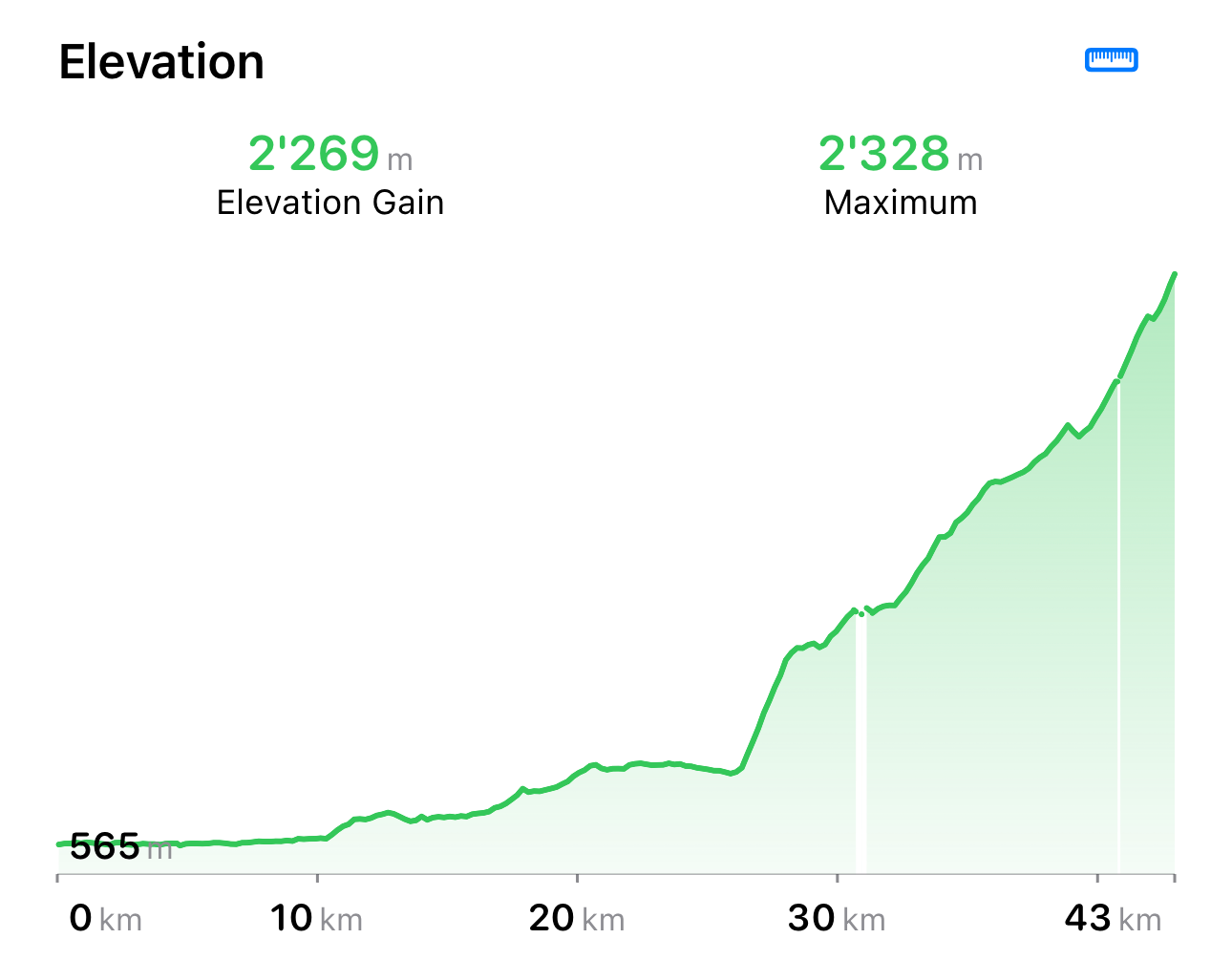
As such, I knew that there wasn’t enough battery left in the device for the remaining time. So what I did is I turned on the low-power mode and traded away my always-on display for a bit of longer battery life. I wanted to keep on the position sharing so the people cheering me on still had access to my position and could see how I was doing. I wasn’t entirely sure if that would work while keeping low-power mode on, but I did so anyway.
After another quite gruelling 10 km, I noticed that I was still loosing more battery than I needed for me to finish the race. So I turned on flight mode on the watch as well, to ensure I would get GPS tracking until the end of the race. Not just for my Strava privileges, but also because I was pacing myself according to the watch as well. Of course this confused the people tracking me, as now the Find My was showing the position of my phone (which was at the finishing line), but that was less important than me being able to track myself. I finally finished the race with about 5% of battery left on the Apple Watch. And personally, I felt just as tired as the Apple Watch as well, though I would argue that I did much more work than it.
Where do I go from here
I’m honestly a bit disappointed by the battery power of the Apple Watch Ultra. I understand that normal people don’t run 6+ hour marathons, but I expected the Ultra to be able to track me for the full time, after all, it is called the Ultra. Notwithstanding this, I still think it’s a great smartwatch, but it’s a mediocre sports watch at best.
I think I will go back to Garmin at some point, especially because I’d like to continue to push myself in my running journey. I will do another long race and I need to be able to depend on my running watch to provide me the information I need and to provide it until the very end. Furthermore, I’m sure the Ultra 2 would also have a bit better battery life, but currently I’m simply not seeing why I should upgrade to this device, especially considering that my Ultra 1 is only about 2 years old.
I looked at the Forerunner 965, and it does look as if it has quite a bit of better features than the 945 I used to have. But I will not buy it right now, I will probably wait a bit longer until Garmin announces the next generation of the Forerunner 900 series. And I will most likely upgrade to that one then. And let’s see, maybe I will just use the two watches, one for the smarts and one for the sports.
There are also people doing the same race in a bit more than 3 hours, but those people are much faster than me. I would expect the median finisher time to be more around 5 hours. ↩︎
In my opinion, Pebble was one of the best smartwatches around. It worked seamlessly with almost any phone, and it was just so fun to use. Every so often, I still miss my Pebble smartwatch and wonder what could have been. ↩︎
Not so much running seriously, but starting to see running as an important pillar in my health. ↩︎